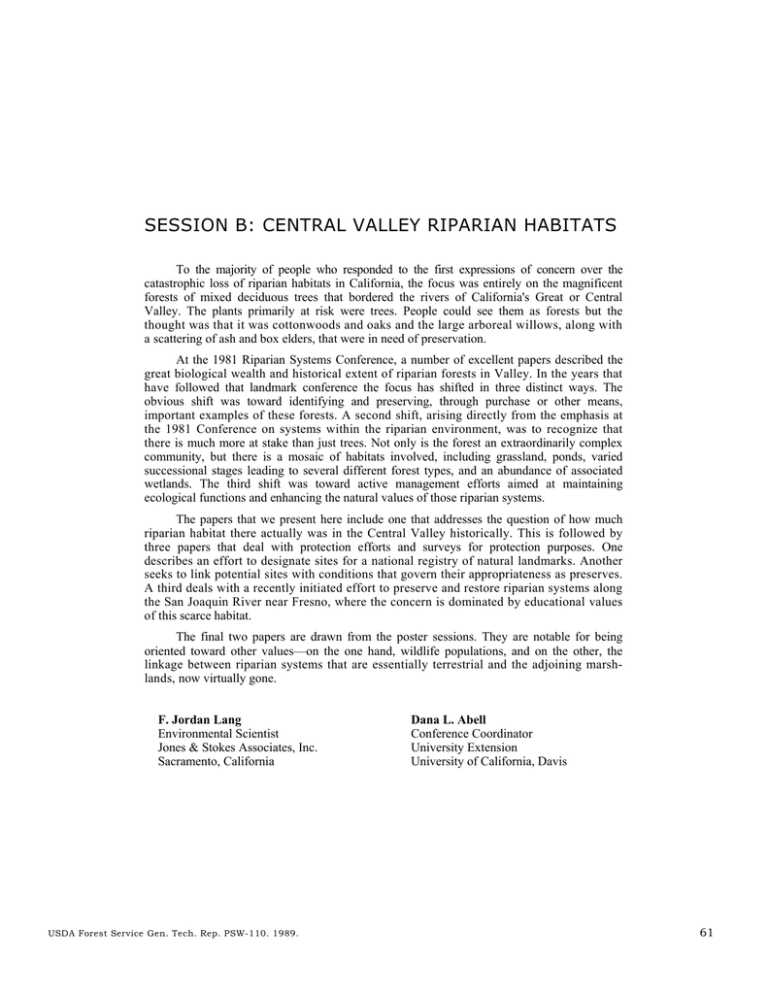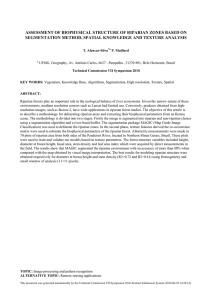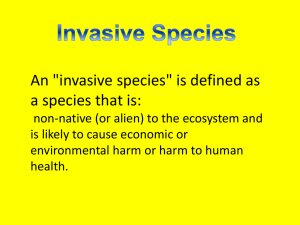SESSION B: CENTRAL VALLEY RIPARIAN HABITATS
advertisement

SESSION B: CENTRAL VALLEY RIPARIAN HABITATS To the majority of people who responded to the first expressions of concern over the catastrophic loss of riparian habitats in California, the focus was entirely on the magnificent forests of mixed deciduous trees that bordered the rivers of California's Great or Central Valley. The plants primarily at risk were trees. People could see them as forests but the thought was that it was cottonwoods and oaks and the large arboreal willows, along with a scattering of ash and box elders, that were in need of preservation. At the 1981 Riparian Systems Conference, a number of excellent papers described the great biological wealth and historical extent of riparian forests in Valley. In the years that have followed that landmark conference the focus has shifted in three distinct ways. The obvious shift was toward identifying and preserving, through purchase or other means, important examples of these forests. A second shift, arising directly from the emphasis at the 1981 Conference on systems within the riparian environment, was to recognize that there is much more at stake than just trees. Not only is the forest an extraordinarily complex community, but there is a mosaic of habitats involved, including grassland, ponds, varied successional stages leading to several different forest types, and an abundance of associated wetlands. The third shift was toward active management efforts aimed at maintaining ecological functions and enhancing the natural values of those riparian systems. The papers that we present here include one that addresses the question of how much riparian habitat there actually was in the Central Valley historically. This is followed by three papers that deal with protection efforts and surveys for protection purposes. One describes an effort to designate sites for a national registry of natural landmarks. Another seeks to link potential sites with conditions that govern their appropriateness as preserves. A third deals with a recently initiated effort to preserve and restore riparian systems along the San Joaquin River near Fresno, where the concern is dominated by educational values of this scarce habitat. The final two papers are drawn from the poster sessions. They are notable for being oriented toward other values—on the one hand, wildlife populations, and on the other, the linkage between riparian systems that are essentially terrestrial and the adjoining marshlands, now virtually gone. F. Jordan Lang Environmental Scientist Jones & Stokes Associates, Inc. Sacramento, California USDA Forest Service Gen. Tech. Rep. PSW-110. 1989. Dana L. Abell Conference Coordinator University Extension University of California, Davis 61











